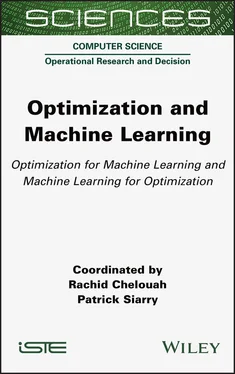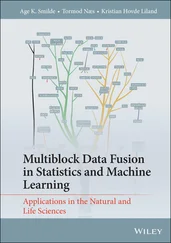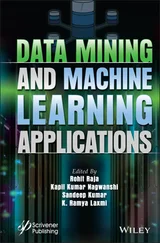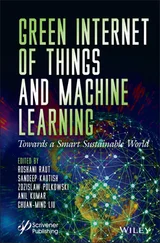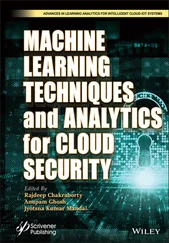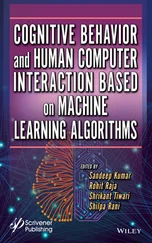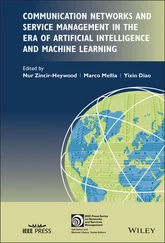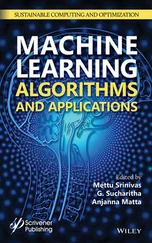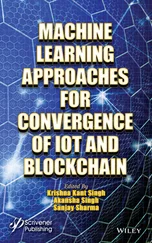1 Cover
2 Title Page SCIENCES Computer Science , Field Directors – Valérie Berthé and Jean-Charles Pomerol Operational Research and Decision , Subject Head – Patrick Siarry
3 Copyright First published 2022 in Great Britain and the United States by ISTE Ltd and John Wiley & Sons, Inc. Apart from any fair dealing for the purposes of research or private study, or criticism or review, as permitted under the Copyright, Designs and Patents Act 1988, this publication may only be reproduced, stored or transmitted, in any form or by any means, with the prior permission in writing of the publishers, or in the case of reprographic reproduction in accordance with the terms and licenses issued by the CLA. Enquiries concerning reproduction outside these terms should be sent to the publishers at the under mentioned address: ISTE Ltd 27-37 St George’s Road London SW19 4EU UK www.iste.co.uk John Wiley & Sons, Inc 111 River Street Hoboken, NJ 07030 USA www.wiley.com © ISTE Ltd 2022 The rights of Rachid Chelouah and Patrick Siarry to be identified as the authors of this work have been asserted by them in accordance with the Copyright, Designs and Patents Act 1988. Library of Congress Control Number: 2021949293 British Library Cataloguing-in-Publication Data A CIP record for this book is available from the British Library ISBN 978-1-78945-071-2 ERC code: PE1 Mathematics PE1_19 Control theory and optimization PE6 Computer Science and Informatics PE6_11 Machine learning, statistical data processing and applications using signal processing (e.g. speech, image, video)
4 Introduction
5 PART 1 Optimization 1 Vehicle Routing Problems with Loading Constraints: An Overview of Variants and Solution Methods 1 Vehicle Routing Problems with Loading Constraints: An Overview of Variants and Solution Methods Ines SBAI1 and Saoussen KRICHEN1 1Université de Tunis, Institut Supérieur de Gestion de Tunis, LARODEC Laboratory, Tunisia This chapter combines two of the most studied combinatorial optimization problems, namely, the capacitated vehicle routing problem (CVRP) and the two/three-dimensional bin packing problem (2/3D-BPP). It focuses heavily on real-life transportation problems such as the transportation of furniture or industrial machinery. An extensive overview of the CVRP with two/three-dimensional loading constraints is presented by surveying over 76 existing contributions. We provide an updated review of the variants of the L-CVRP studied in the literature and analyze some of the most popular optimization methods presented in the existing literature. Alongside this, we discuss their variants and constraints, their applications for solving real-world problems, as well as their impact on the current literature.
1.1. Introduction 1.2. The capacitated vehicle routing problem with two-dimensional loading constraints 1.3. The capacitated vehicle routing problem with three-dimensional loading constraints 1.4. Perspectives on future research 1.5. References 2 MAS-aware Approach for QoS-based IoT Workflow Scheduling in Fog-Cloud Computing 2.1. Introduction 2.2. Related works 2.3. Problem formulation 2.4. MAS-GA-based approach for IoT workflow scheduling 2.5. GA-based workflow scheduling plan 2.6. Experimental study and analysis of the results 2.7. Conclusion 2.8. References 3 Solving Feature Selection Problems Built on Population-based Metaheuristic Algorithms 3.1. Introduction 3.2. Algorithm inspiration 3.3. Mathematical modeling 3.4. Theoretical fundamentals of feature selection 3.5. Mathematical modeling of the feature selection optimization problem 3.6. Adaptation of metaheuristics for optimization in a binary search space 3.7. Adaptation of the grey wolf algorithm to feature selection in a binary search space 3.8. Experimental implementation of bGWO1 and bGWO2 and discussion 3.9. Conclusion 3.10. References 4 Solving the Mixed-model Assembly Line Balancing Problem by using a Hybrid Reactive Greedy Randomized Adaptive Search Procedure 4.1. Introduction 4.2. Related works from the literature 4.3. Problem description and mathematical formulation 4.4. Basic greedy randomized adaptive search procedure 4.5. Reactive greedy randomized adaptive search procedure 4.6. Hybrid reactive greedy randomized adaptive search procedure for the mixed model assembly line balancing problem type-2 4.7. Experimental examples 4.8. Conclusion 4.9. References
6 PART 2 Machine Learning 5 An Interactive Attention Network with Stacked Ensemble Machine Learning Models for Recommendations 5.1. Introduction 5.2. Related work 5.3. Interactive personalized recommender 5.4. Experimental settings 5.5. Experiments and discussion 5.6. Conclusion 5.7. References 6 A Comparison of Machine Learning and Deep Learning Models with Advanced Word Embeddings: The Case of Internal Audit Reports 6.1. Introduction 6.2. Related work 6.3. Experiments and evaluation 6.4. Conclusion and future work 6.5. References 7 Hybrid Approach based on Multi-agent System and Fuzzy Logic for Mobile Robot Autonomous Navigation 7.1. Introduction 7.2. Related works 7.3. Problem position 7.4. Developed control architecture 7.5. Navigation principle by fuzzy logic 7.6. Simulation and results 7.7. Conclusion 7.8. References 8 Intrusion Detection with Neural Networks: A Tutorial 8.1. Introduction 8.2. Dataset analysis 8.3. Data preparation 8.4. Feature selection 8.5. Model design 8.6. Results comparison 8.7. Deployment in a network 8.8. Future work 8.9. References
7 List of Authors
8 Index
9 End User License Agreement
1 Chapter 1 Figure 1.1. An example of a 2L-CVRP solution Figure 1.2. An example of a 3L-CVRP solution
2 Chapter 2Figure 2.1. Solution architecture. For a color version of this figure, see www.i...Figure 2.2. GA flowchart Figure 2.3. Workflow scheduling process Figure 2.4. Workflow example. For a color version of this figure, see www.iste.c...Figure 2.5. Example of resources. For a color version of this figure, see www.is...Figure 2.6. Illustration of crossover operator Figure 2.7. Illustration of mutation operation Figure 2.8. Health monitoring process Figure 2.9. Inspiral-15 workflow benchmark. For a color version of this figure, ...Figure 2.10. Percentage of IoT workflow executed tasks on Fog computing and Clou...Figure 2.11. Percentage of Inspiral-15 workflow executed tasks on Fog computing ...Figure 2.12. Average of latency when executing the healthcare workflow and Inspi...Figure 2.13. Average of makespan when executing the healthcare workflow and Insp...Figure 2.14. Average of cost when executing the healthcare workflow and Inspiral...
3 Chapter 3Figure 3.1. Wolf pack hierarchy Figure 3.2. Search, pursue, surround-harass and attack the prey Figure 3.3. Pack hierarchy modeling Figure 3.4. Alpha, Beta, Delta and Omega Wolf positions around prey Figure 3.5. Position of the wolf agent and its prey in a square with N = 2 (Mirj...Figure 3.6. Position of the wolf agent and its prey in a cube with N = 3 (Mirjal...Figure 3.7. Steering of exploration and exploitation phases with vector A during...Figure 3.8. Search exploration phase | A |≥ 1 and attack exploitation phase 1 >| A |≥0...Figure 3.9. Feature selection process. For a color version of this figure, see w...Figure 3.10. Binary search space with N=3 Figure 3.11. Selection vector of features D2 and D5 Figure 3.12. Border of optimal dominant solutions with the Pareto meaning Figure 3.13. S and V transfer function (Mirjalili and Lewis 2013). For a color v...
4 Chapter 4Figure 4.1. Assembly line balancing problem categories Figure 4.2. Mixed- and multi-model assembly lines. For a color version of this f...Figure 4.3. Precedence relations Figure 4.4. Neighborhood search procedure for the ALBP Figure 4.5. Variation of probabilities during solving problem 01. For a color ve...Figure 4.6. Variation of probabilities during solving problem 02. For a color ve...Figure 4.7. Variation of probabilities during solving problem 03. For a color ve...
Читать дальше
